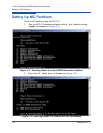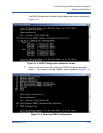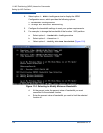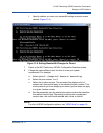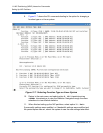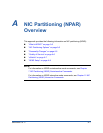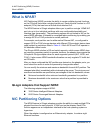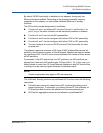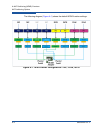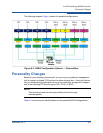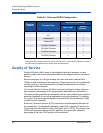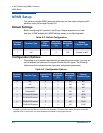
A–NIC Partitioning (NPAR) Overview
NIC Partitioning Options
SN0054667-00 C A-3
By default, NPAR functionality is disabled on the adapters, having only two
Ethernet functions enabled. Depending on the feature personality mapping
supported on the adapter, you can enable additional Ethernet or storage
functions.
The PCI function number assignment is as follows:
Functions 0 and 1 are always NIC, function 0 for port 1 and function 1 for
port 2; any of the other functions can be individually enabled or disabled.
Functions 2 and 3 can only be NIC personalities.
Functions 4 and 5 can be configured with either iSCSI or NIC personality.
Functions 6 and 7 can be configured with either FCoE or NIC personality.
You can configure at most one iSCSI and one FCoE personality for each
physical port.
The adapter supports a maximum of 64 Layer-2 MAC address filters across all
partitions, which limits the number of Virtual Network Adapters that can be created
on a partitioned NIC. The NIC driver evenly distributes the number of filters across
all NIC partitions.
For example, if the NIC adapter has four NIC partitions, two NIC partitions per
physical port, then each NIC partition gets 16 filters (64/4 = 16). In this case, you
should create no more than 16 Virtual Network Adapters on any NIC function that
is configured to be used by HyperV Network Virtualization stack.
The VLAN and Teaming solutions on partitioned NIC functions have the following
restrictions:
Fail-safe team cannot be created using NIC functions that belong to the
same physical port. For example, you cannot choose PF2 as a backup for
PF0 because both functions are partitions of the same physical port.
802.3ad link aggregation teams are not allowed on partitioned NIC
NOTE:
Similar requirements also apply to ESX environments.




